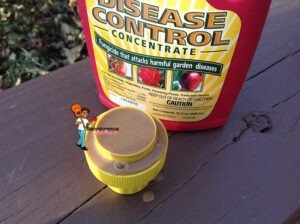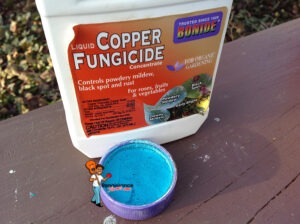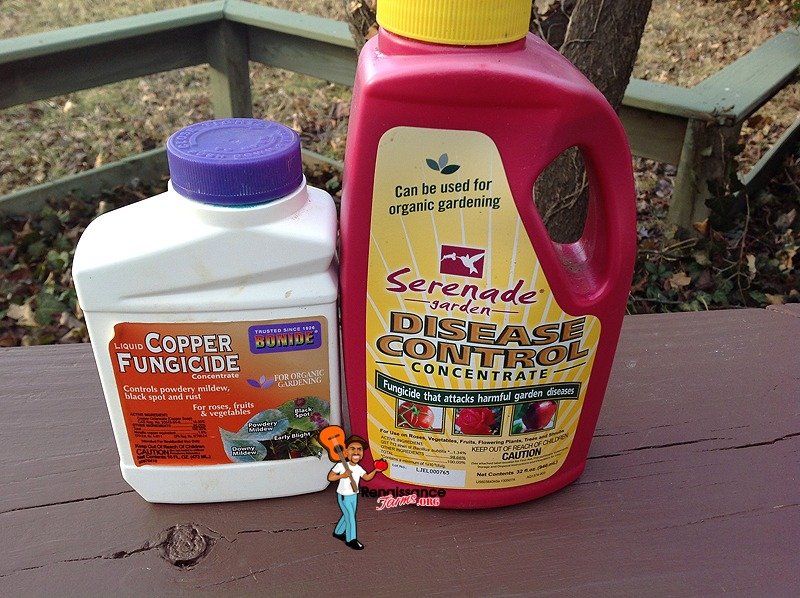2 Effective Fungicides For Organic Tomato Gardening
 I have been growing organic, heirloom and open-pollinated tomatoes for more than two decades. During this time, I have had some ups and downs along the way. But, since 2009, my plants have remained healthier and harvests much better. I owe this successful streak to my discovery of two very effective fungicides. Don’t get me wrong, I have always managed to get harvests from my tomato plants, but at times they have been meager. One particular season my plants just seemed to barely make it over the line and I struggled all year trying to keep them alive. I wanted less headaches and bigger harvests. I also wanted extended seasons. Before I continue, I would like to mention that I have also tried some home remedies along the way. I will discuss just one of those remedies, solely because I did have some success using it. I will do so before I comment about what have been 2 effective fungicides for organic tomato gardening which have totally change my growing experience. So hang with me!
I have been growing organic, heirloom and open-pollinated tomatoes for more than two decades. During this time, I have had some ups and downs along the way. But, since 2009, my plants have remained healthier and harvests much better. I owe this successful streak to my discovery of two very effective fungicides. Don’t get me wrong, I have always managed to get harvests from my tomato plants, but at times they have been meager. One particular season my plants just seemed to barely make it over the line and I struggled all year trying to keep them alive. I wanted less headaches and bigger harvests. I also wanted extended seasons. Before I continue, I would like to mention that I have also tried some home remedies along the way. I will discuss just one of those remedies, solely because I did have some success using it. I will do so before I comment about what have been 2 effective fungicides for organic tomato gardening which have totally change my growing experience. So hang with me!
Using Aspirin To Fight Tomato Diseases.
In my early organic gardening years, I had a difficult time finding products that worked for tomato diseases, especially early and late blight. A friend mentioned that he had success using aspirin diluted in water. I did try that for a couple of years. If I had to grade its success, I would rate it a 5 out of 10. It gets this rating simply because after trying to at various dosages over two seasons, I found that it did slow down the diseases but my plants were very leafy, huge and always had very few fruits. So my experience with it is great vegetation growth and less fruits. May we continue?
Serenade Fungicide Will Fight Tomato Diseases For You
 Serenade is a product by Beyer. It has worked very well for me for at least 10 years. I have had excellent success with it, especially when using it in a timely manner. So I start treatment from the time my seedlings are transplanted in their first grow-out container, about 3 weeks old. I do believe that much of the success which I have had, is attributed to early and consistent treatment. Serenade does not kill the diseases on the plats, rather, it simply forms a protection zone, shielding your plants from the effects of diseases. In a nutshell, it slows the disease down, essentially buying you time to have your best possible harvest. Serenade works excellently if the disease is caught early or if proactive measures are taken. When spraying, be sure to get as much of the leaves and stems as you can. Treatments may have to be repeated after it rains. In case you were wondering, Serenade fungicide can be used in organic gardening.
Serenade is a product by Beyer. It has worked very well for me for at least 10 years. I have had excellent success with it, especially when using it in a timely manner. So I start treatment from the time my seedlings are transplanted in their first grow-out container, about 3 weeks old. I do believe that much of the success which I have had, is attributed to early and consistent treatment. Serenade does not kill the diseases on the plats, rather, it simply forms a protection zone, shielding your plants from the effects of diseases. In a nutshell, it slows the disease down, essentially buying you time to have your best possible harvest. Serenade works excellently if the disease is caught early or if proactive measures are taken. When spraying, be sure to get as much of the leaves and stems as you can. Treatments may have to be repeated after it rains. In case you were wondering, Serenade fungicide can be used in organic gardening.
Treating Seeds With Serenade Fungicide
As a quick note, I usually start treating my seedlings as soon as I up-pot them into their grow out containers. Plants for my garden are up-potted in 2 inch pots, where they grow to about 1 foot tall before transplant. So during this grow-out stage, they are treated at least a couple of times. They are again treated about 2 weeks after transplant, once they have caught on. Treatment continue as needed throughout the season. I have also read lots of literature which encourages the treatment of seeds with serenade before germination. By all accounts, it seems to be the best possibly scenario for a healthier seedling, plant and garden. So this year, 2018, I will be experimenting with seed treatment. I will keep you posted! Check out THIS link.
Liquid Copper Fungicide By Bonide
 Liquid Copper fungicide is another disease control tool that I have used on my tomato plants, with excellent results! To be honest, like Serenade fungicide, when used in a timely manner, it will work wonderfully. If properly and systematically applied, copper will kill the pathogens that sit on the plant surfaces. But if pathogens have entered the plant tissue, it has less effectiveness. At that point, it acts more as a protectant. One of the things that I like about this copper fungicide is the it’s blue. So when sprayed on plants, leaves are left with a blueish tint, which signifies to me that plants have been sprayed. This aspect helps me track the plant’s progress. I use the Bonide brand. With that said, avoid getting it on your clothes, because will leave deep blue stains that would be difficult to remove. The color is pretty though. I just love blue!
Liquid Copper fungicide is another disease control tool that I have used on my tomato plants, with excellent results! To be honest, like Serenade fungicide, when used in a timely manner, it will work wonderfully. If properly and systematically applied, copper will kill the pathogens that sit on the plant surfaces. But if pathogens have entered the plant tissue, it has less effectiveness. At that point, it acts more as a protectant. One of the things that I like about this copper fungicide is the it’s blue. So when sprayed on plants, leaves are left with a blueish tint, which signifies to me that plants have been sprayed. This aspect helps me track the plant’s progress. I use the Bonide brand. With that said, avoid getting it on your clothes, because will leave deep blue stains that would be difficult to remove. The color is pretty though. I just love blue!
Combining Both Fungicides Works Too
Yes, I have used both fungicides together. I am not sure if one or the other worked better, or if they helped each other. All I know is that this mixture worked excellently too. It worked so well that I may use this solely this method from now on.
So there you have it. My favorite 2 effective fungicides for organic tomato gardening! One or the other, or both have saved my garden year after year for at least a decade. More on diseases. Happy gardening, Ya’ll!





